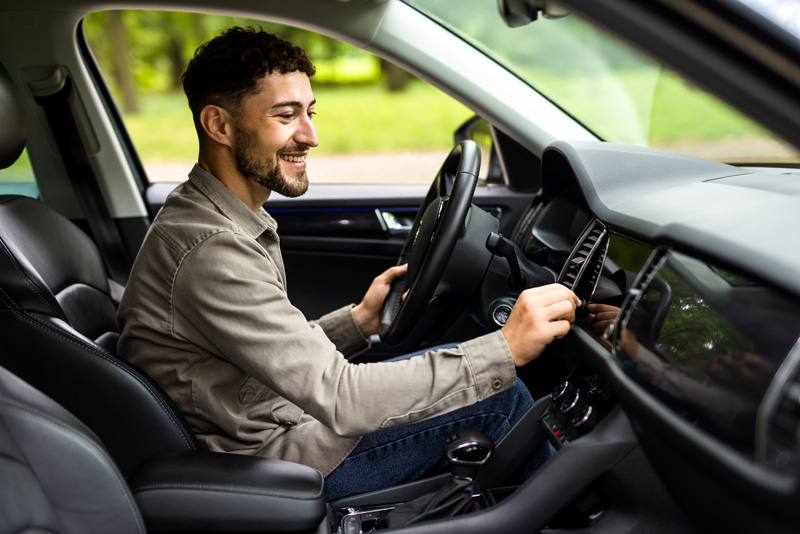When driving a vehicle, sensory issues are important considerations for autistic people. Driving uses almost every sense in the body, like sight, smell, and sound, and all these senses are processed simultaneously, every time you get behind the wheel of a car. If you’re not able to process specific senses, that sensory issue could become a dangerous barrier to driving.
Comfort tools (tools that help address sensory needs) can address specific sensory issues and help ease issues when driving.

Here are five comfort tools for driving that have worked for me.
1. Music
Music can be a powerful comfort tool during driving. Research indicates that music, when self-chosen, can improve focus and decrease mind-wandering during tasks that require constant attention. Personally, once my favorite music is playing when I drive, I become hyper-focused, which enhances my driving. While my taste in music ranges from video game songs to Al Jolson and classic Hollywood movie scores, everyone’s taste varies. As long as you’re listening to the songs you prefer, you can use music as a comfort tool to increase your driving focus and experience. Please note that beginner and inexperienced drivers may find music to be more of a distraction than an aid.
2. Clothing
Comfortable clothing may also help during drives, especially if you have sensory issues with certain fabrics or tags. Wearing clothes that are comfortable can help cut down on sensory distraction and let you pay more attention to the road.
If there is a favorite piece of clothing that you own, wearing it while you drive may also help you feel confident and comfortable when you’re behind the wheel. For example, I have a favorite shawl I like to wear when I go on any major trips, such as a conference or tour. It helps me feel self-assured and relaxed, which makes me a better driver. The next time you’re heading out to your car, try grabbing that item of clothing you love and see if it helps.
3. Sensory Toys
The main reason for having a sensory toy in your car is for familiarity and comfort. Touching your favorite sensory toy when it’s safe to do so can help you self-regulate if you’re getting overstimulated. For me, my comfort tool is a Pokémon plushie hanging on my rearview mirror. I like to touch it to help keep me calm during traffic stops before the light turns green.
4. Mounted GPS
Having a mounted GPS in your car can be helpful and make your trips easier to manage. Mounts are especially useful since you do not need to move your eyes or head that much to get a quick glance. That leaves all your focus on driving itself. Please always drive safely and limit the use of other devices until after driving.
5. A Favorite Drink
Even mild dehydration can worsen reaction time and concentration, so staying hydrated is important when you’re driving. A favorite drink can also help you find comfort when you’re on a trip. Personally, cold coffee energizes me and calms my mind, but if caffeine gives you anxiety or other unpleasant sensations, you might consider water, decaffeinated tea, or something similar instead.
Overall, finding comfort tools can help you fulfill or regulate your sensory needs so you can drive safely the way you want to. What works for me may not work for you, and that’s okay. The cool thing about comfort tools is that there are boundless possibilities for finding the right items for you, and when you do, you can drive anywhere.
Andrew Arboe is a self-advocate currently employed at FOCUS Center for Autism. To contact him, email arboea@gmail.com. For more information about Andrew, please visit andrewarboe.weebly.com.






